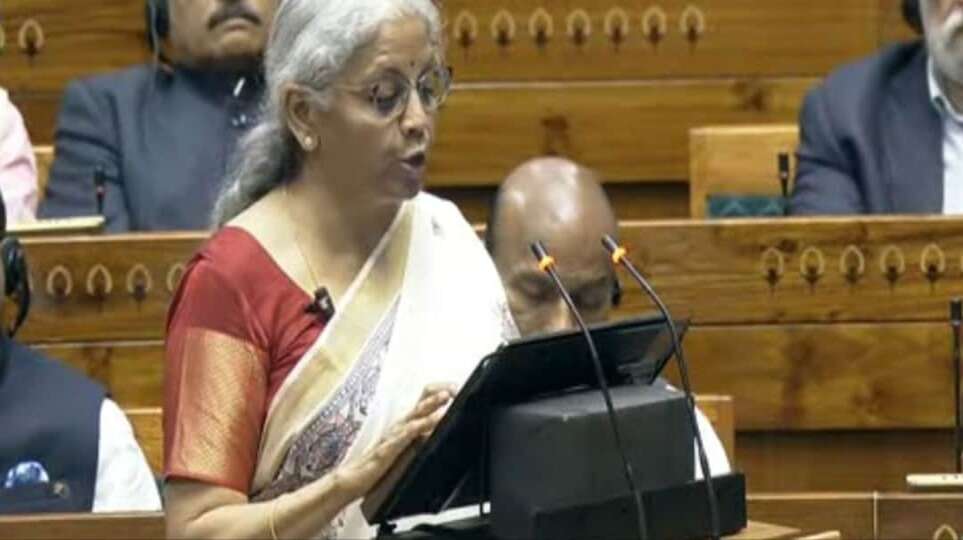Union Budget 2025: Major Announcements and Economic Impact

Union Budget 2025: Key Announcements, Economic Outlook, and Major Takeaways
Finance Minister Nirmala Sitharaman presented the Union Budget 2025 today, outlining the government’s economic vision for the upcoming fiscal year. With the Lok Sabha elections approaching, this budget holds immense significance, addressing key sectors such as taxation, infrastructure, social welfare, and economic growth. Here’s a detailed breakdown of the major announcements and their impact.
1. Income Tax Slabs and Relief for Middle-Class Taxpayers
One of the most anticipated aspects of the budget was changes in income tax policies. While expectations were high for increased exemptions and deductions, the government maintained the existing tax structure with minor tweaks. The new tax regime remains optional, with no major changes to the slabs, but there were incentives to encourage more taxpayers to adopt it.
For salaried individuals, standard deductions have been slightly increased, offering some relief to middle-class earners. However, the absence of a major tax cut disappointed many taxpayers who were hoping for a more substantial reduction in their financial burden.
2. Capital Expenditure Boost and Infrastructure Development
The budget prioritized infrastructure growth, allocating a significant increase in capital expenditure. The government announced new projects for roads, railways, and urban development. The National Infrastructure Pipeline (NIP) received additional funding to accelerate ongoing projects, particularly in Tier-2 and Tier-3 cities.
The finance minister emphasized that boosting infrastructure spending would create jobs, stimulate economic activity, and attract private sector investments. Special focus was placed on expanding metro rail networks, improving highways, and upgrading ports to enhance connectivity and trade efficiency.
3. Fiscal Deficit and Economic Growth Projections
With concerns over fiscal discipline, the government maintained its target to reduce the fiscal deficit. The projected fiscal deficit for 2025-26 is expected to remain within the targeted limits, showcasing the government’s commitment to financial prudence.
On the economic front, India’s GDP growth is projected to remain strong, with a focus on domestic manufacturing, digital transformation, and green energy. The government reiterated its commitment to the ‘Make in India’ and ‘Atmanirbhar Bharat’ initiatives to boost self-reliance and reduce import dependency.
4. Agriculture and Rural Development: Support for Farmers
Recognizing the significance of the agriculture sector, the budget introduced new schemes for farmers, including increased minimum support prices (MSP) and subsidies for fertilizers. Special allocations were made for irrigation projects and modernizing farming techniques through AI and data-driven solutions.
Additionally, rural employment schemes like MGNREGA saw a moderate budget increase, ensuring job security for millions in rural India. The government also announced measures to promote organic farming and agritech startups.
5. Digital Economy and AI Integration
A significant highlight of the budget was the government’s push toward the digital economy. New policies were introduced to encourage artificial intelligence (AI) adoption across industries, especially in governance, healthcare, and education.
The finance minister announced incentives for tech startups and digital payment infrastructure, emphasizing the need for cybersecurity enhancements in India’s rapidly growing digital ecosystem. The Digital India program received additional funding to expand internet access in rural areas and boost digital literacy.
6. Social Welfare: Healthcare, Education, and Women Empowerment
The budget placed a strong focus on social welfare initiatives, particularly in healthcare and education. Allocations for the Ayushman Bharat scheme were increased, with plans to cover more beneficiaries under the universal health coverage program.
Education saw a boost with increased funding for skill development programs and scholarships for students from economically weaker sections. Additionally, women’s empowerment programs received substantial funding, focusing on self-employment and financial inclusion.
7. Energy and Sustainability: Green Initiatives
In line with global climate commitments, the budget introduced several green initiatives, including incentives for electric vehicles (EVs), renewable energy projects, and carbon credit trading. The government reaffirmed its goal to achieve net-zero carbon emissions by 2070, allocating funds for solar and wind energy projects.
The focus on sustainable energy was complemented by new policies encouraging green hydrogen production and reducing reliance on fossil fuels.
8. Stock Market and Corporate Sector Reactions
Following the budget announcement, stock markets witnessed mixed reactions. While infrastructure and tech-related stocks saw positive movement, sectors like real estate and FMCG faced some volatility due to concerns over taxation policies.
The corporate sector welcomed the government’s pro-growth stance but expressed concerns over the lack of direct tax relief for businesses. Industry leaders urged the government to introduce further reforms to ease regulatory compliance and promote ease of doing business.
Conclusion: A Balanced Budget with an Eye on Growth
The Union Budget 2025 reflects a balanced approach, focusing on economic growth, infrastructure development, and social welfare while maintaining fiscal discipline. While it brings optimism for industries and digital transformation, the lack of major tax cuts may leave some middle-class taxpayers disappointed.
With elections approaching, this budget serves as a roadmap for India’s economic future, reinforcing the government’s commitment to long-term growth and sustainability. However, its success will depend on effective implementation and market response in the coming months.
